Alcatraz
Thursday is the boys’ first day of school, so we thought we’d “send them off” Wednesday by taking them to one of the world’s most famous prisons. ANYTHING is better than this, right?
My Mom went along with us, having lived in and out of the Bay Area for her entire 92 years and not yet visited the renowned island.
After some adventurous street-navigation, we arrived at the Alcatraz landing. The ferry boats are substantial, carrying 300+ tourists across the 1.25 miles of water to and from the island.
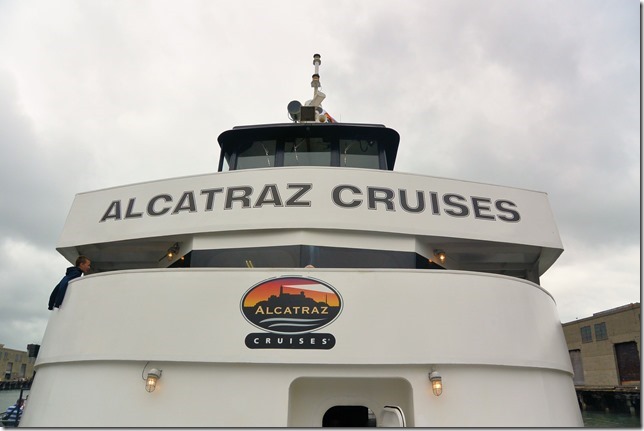
Crossing the water, the contrast of being so near, yet so far, is emphasized. The day was overcast and gloomy, a perfect back-drop to visit a maximum-security penitentiary. That’s the Golden Gate in the background.
The boys stuck to the ferry fore-deck, eagerly awaiting a drenching ocean spray that sadly (for them) never came. I was thankful for small blessings, harboring visions of wrangling two salty-wet ragamuffins for a 4-hour afternoon.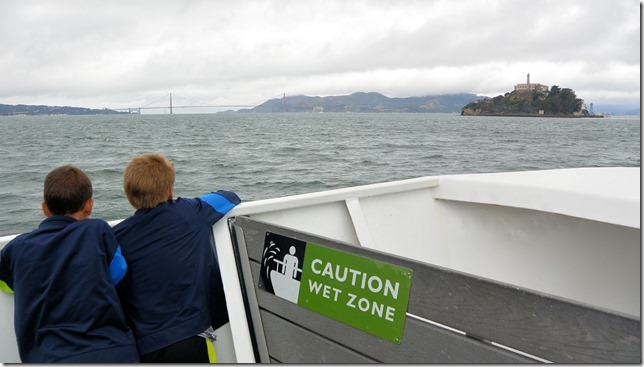
Alcatraz started its life as a fort, way back in 1854, and approaching it shows why it was considered a very defensible position. It began being used for prisoners of various sorts (miltiary, Indian), and then became an official penitentiary in 1934.
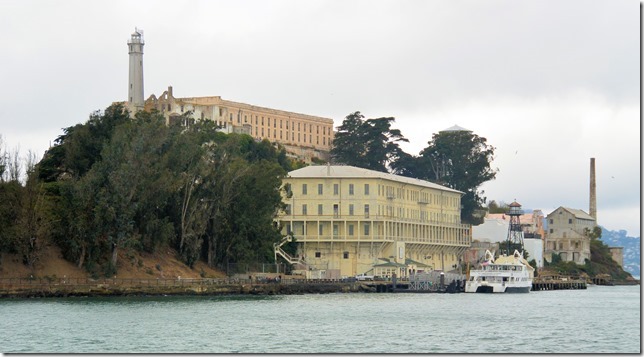
Maximum security indeed, and maximum strictness as well. The visitor center sports 3-inch-thick bullet-proof glass. Placards display the simple fact that residents are prisoners with only the most basic of rights.
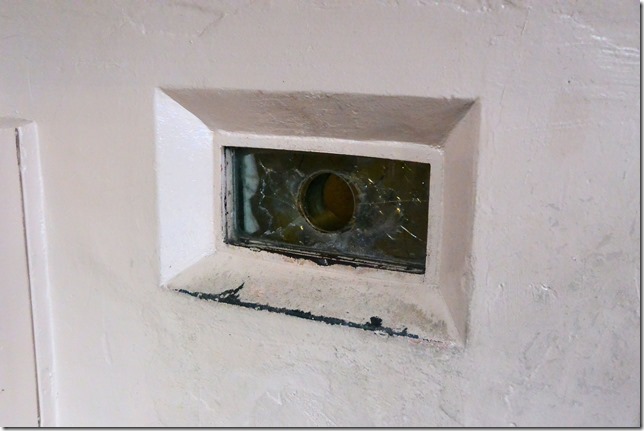
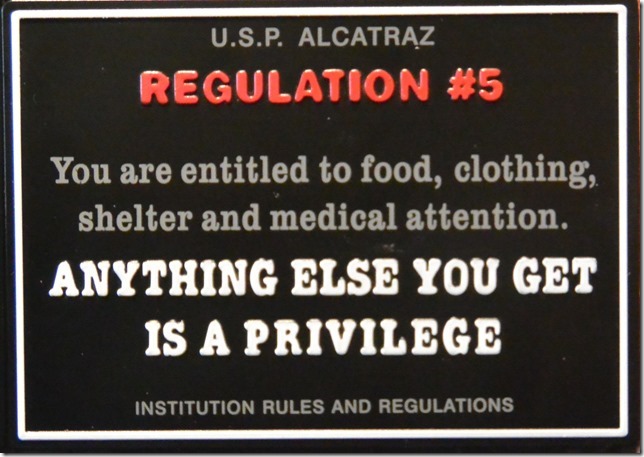
Cell doors were robust, and controlled by a simple but reliable mechanical system. No electronics, just iron, brass, and muscle.
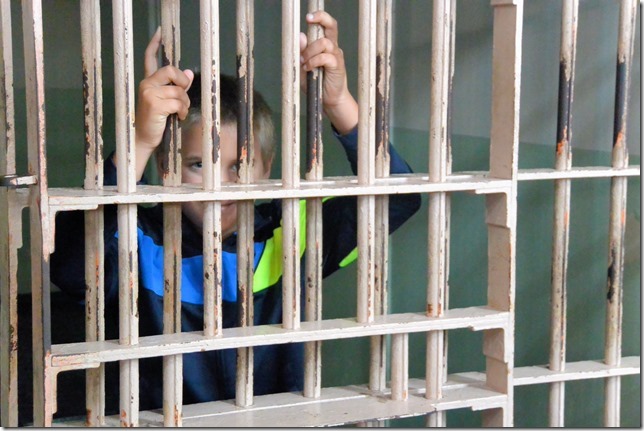
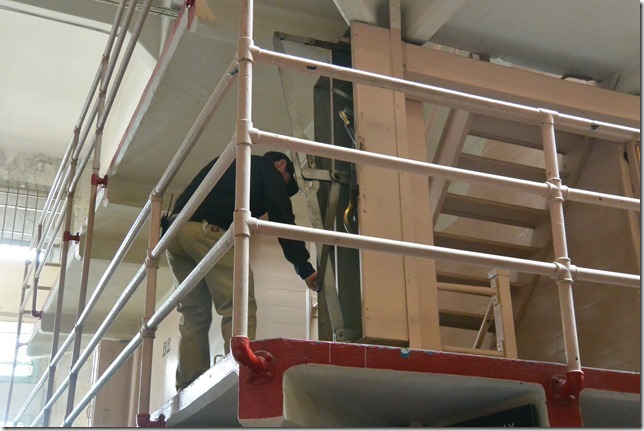
Good prisoners were locked in a 5×9 cell 24 hours a day, with a few hours on weekends for outside exercise. Bad prisoners went to the “hole”, solitary confinement in a blackened double-barred cell, for anywhere from hours to weeks.
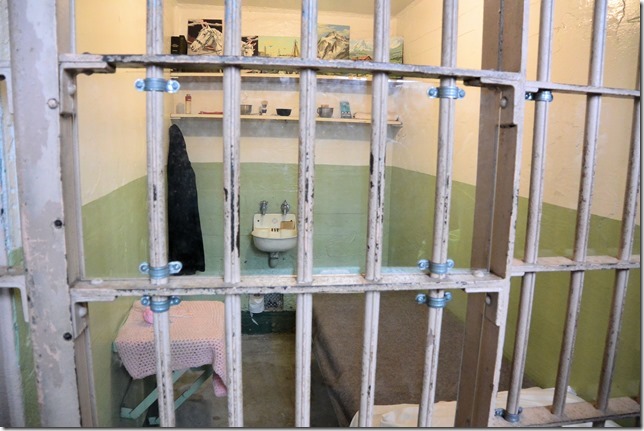
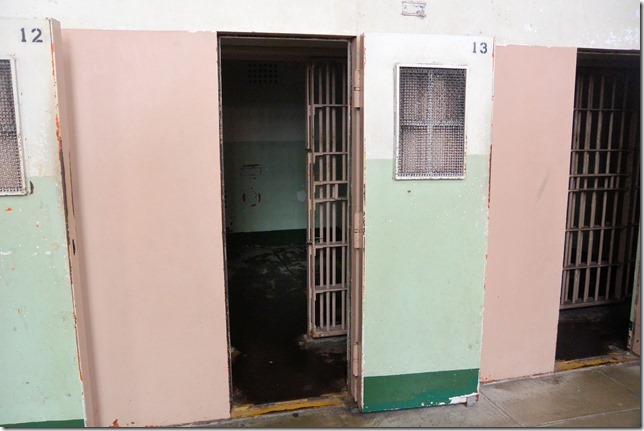
All this security was for good reason. Alcatraz was where the worst-of-the-worst were sent. The prisoner roster is a demon’s list of the truly bad guys in that part of American history. Some of them have photos on display – that’s Al Capone on the left.
On the rare occasions out of his cell, a prisoner’s view would show the tantalizing San Francisco skyline, desperately distant across chilling, current-swept waters.
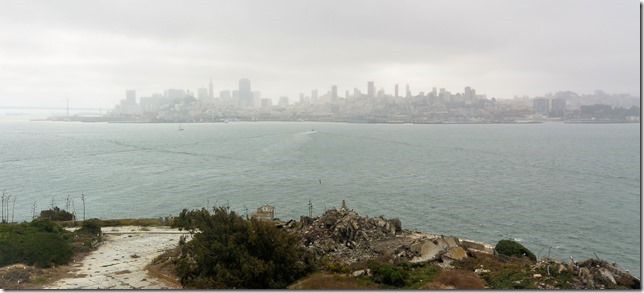
In 1962, one of the most famous escapes occurred. Three men used spoon handles to chip through the aging concrete, fashioned dummy heads for their beds, and made their way out through a service tunnel. They floated away from the island on tiny floats made from raincoats – – – they were never seen again. Some believe they escaped, others say they drowned. It’s 1.25 miles, the water is 58F, and the current is about 6 knots. You probably have your own opinion about what happened to them.
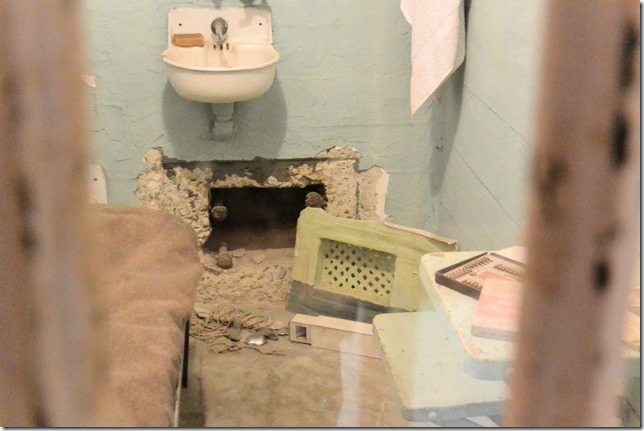
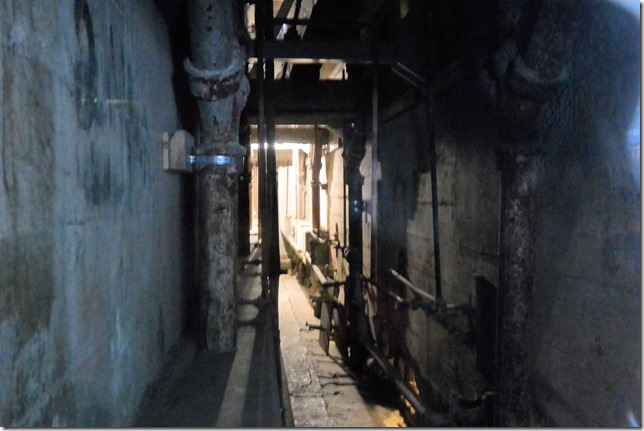
The escape brought attention to the fact that the prison was well past its prime; things were falling apart and it was very expensive to operate. Combined with the perceived risks to the San Francisco citizenry, factors resulted in its closing the next year, 1963. One of the boys queried, “So they let all the prisoners free then?”. No, not so lucky ![]()

As we left the island, the day brightened, a suitable metaphor as we returned to the “free world”.
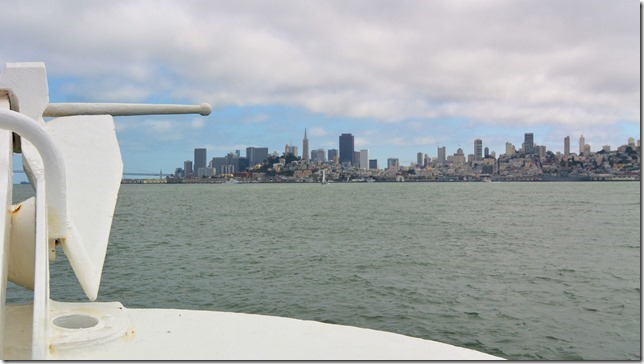
Getting back on-shore was much easier for us than Alcatraz prisoners; we simply caught the ferry back. Once back on the Embarcadero, we could not help ourselves, and wandered over to the tourist-trappy Pier-39. There, we unanimously decided on an ice-cream treat to celebrate our freedom.
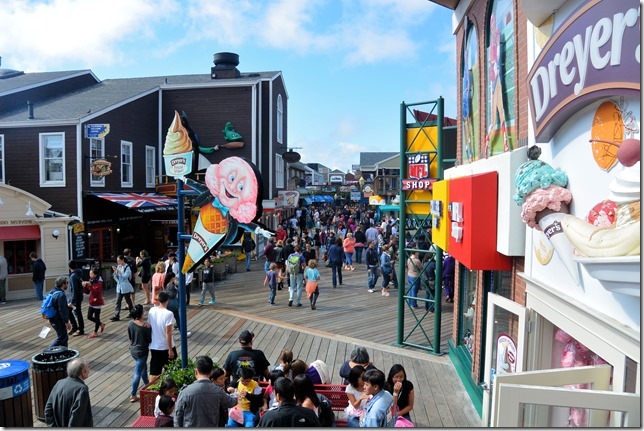
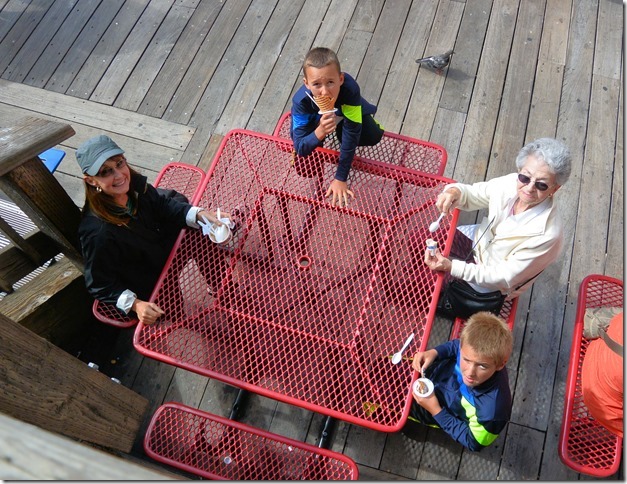
All-in-all, a great day exploring a “local” sight. One of the tour operators told us it was quite common to have only foreign tourists in a group; locals just don’t seem to get around to visiting local attractions. Too busy working, or vacation-traveling to other places.
The homeward trip was pleasant, but long, in the weekday rush-hour traffic. Reminds us why we don’t go up to San Francisco very often. ![]()


Nice show Greg..thanks..tony sr.
Classic outing. I’ve done it a few times myself. I still enjoy it when people come to town and want to visit Alcatraz.